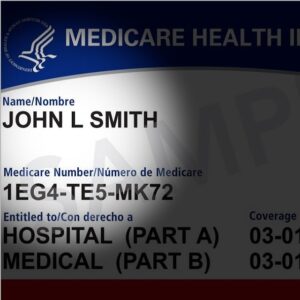Medicare Hospitalization Program Posts Operating Profit for 2021

What You Need to Know
Medicare hospitalization program revenue fell 1.3% in between 2020 and 2021.
Because enrollees minimized use of ordinary, non-COVID-19 care, hospitalization program expenditures fell 18%.
When Medicare is ailing, Congress writes big, unpredictable bills to cure it.
COVID-19 gave the U.S. Medicare Part A hospitalization program a big financial boost in 2021.
Because enrollees minimized use of ordinary hospitals, spending on benefits plunged.
Thanks to that drop in spending on hospital bills, the Medicare Part A program reported the equivalent of a $8.5 billion operating profit in 2021 on $337 billion in revenue, according to the new Medicare Trustees Report.
That compares with a loss of $60 billion on $342 billion in revenue in 2020.
A year ago, the Medicare trustees were predicting that the hospitalization trust fund would run dry in 2026, and that program operating revenue, from payroll taxes and other sources, would cover about 91% of the program costs that year.
Now, the trustees are predicting that the trust fund will last until 2028, but that operating revenue will cover just 90% of program costs in 2028.
What It Means
Until now, members of Congress have responded to Medicare trust fund depletion warnings by racing to write and pass big, “must pass,” hard-to-filibuster Medicare fix bills that include a wide range of provisions.
If past trends continue, the program solvency issues described in the current report may be more likely to lead to big changes in life insurance, annuity, retirement savings program, estate tax and general income tax rules, at some point between now and 2027, than to lead to dramatic changes in the Medicare program.
Medicare and Its Parts
The Medicare program was founded in 1965 and now provides coverage for about 65 million U.S. residents who are 65 or older, have severe kidney disease or qualify for Medicare health benefits because they are getting Social Security disability insurance program benefits.
Medicare Part A — the oldest part of the “original Medicare” program — covers inpatient hospitalization services.
Most Medicare Part A enrollees pay their full share of the cost of coverage by paying payroll taxes into what is officially known as the Federal Hospital Insurance Trust Fund. Ordinary Part A enrollees pay no premiums for their Part A coverage.
In theory, workers and their employers are supposed to be using that trust fund to build up a large pool of assets that can help pay hospitalization bills as the baby boomers age and the ratio of workers to Medicare enrollees falls.
Interest on the trust fund assets is supposed to help pay for the hospitalization program.
Medicare Part B covers outpatient hospital services, physician services and some other services. It has a small trust fund, but enrollees are supposed to pay about enough premiums every year to cover that year’s benefits expenses.
Medicare Part C includes the Medicare Advantage program and other programs that give private organizations a chance to offer alternatives to the original Medicare program. Medicare program managers provide contributions to Medicare Part C plans that are related to what the Medicare program would have spent on the enrollees if they were in the original Medicare program. The enrollees may also pay monthly premiums.
Medicare Part D is the Medicare prescription drug program. That program draws on funding from the federal government, state contributions and enrollee premium payments. Like the Medicare Part B program, the Part D program gets about enough cash in a given year to pay the bills for that year.
Medicare supplement insurance policies are private insurance arrangements that fill in the gaps in Medicare Part A, Medicare Part B and Medicare Part D coverage. The issuers of those policies do not get subsidies from the government.
Medicare Part A Hospitalization Performance Details
The Medicare Part A program’s main source of revenue, payroll taxes, fell 0.3% between 2020 and 2021, to $302 billion.







